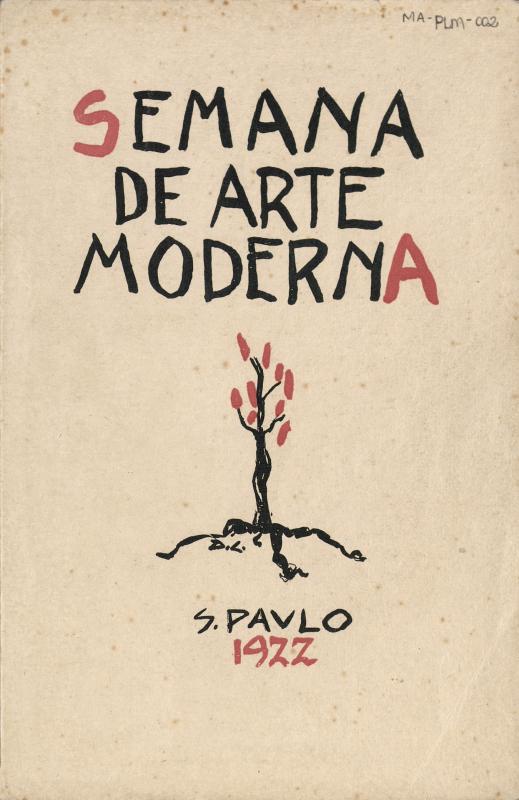This essay by the Argentinean author and art critic Jorge Romero Brest (1905–89) is about Brazilian painting in the first half of the twentieth century. He focuses on the connections between art and society as he discusses the works in the traveling exhibition 20 artistas brasileños, sponsored by the Museo de Bellas Artes de La Plata, Argentina, and organized by the Brazilian writer Marques Rebelo (1907–73), from August 2 through 19, 1945. The show was then taken to Buenos Aires where it was presented from August 25 through September 7, 1945. The participating artists included: Alcides da Rocha Miranda (1909−2001), Aldari Toledo (1915−2000), Roberto Burle Marx (1909−94), Cândido Portinari (1903−62), Cardosinho (1861−1947), Clóvis Graciano (1907–88), Di Cavalcanti (1897–76), Djanira (1914–79), Guignard (1896–1962), Hilda Campofiorito (1901−97), Iberê Camargo (1914–94), José Pancetti (1902–58), José Pedrosa (1915–2002), Milton Dacosta (1915–88), Orlando Teruz (1902–84), Percy Deane (1921−93), Quirino Campofiorito (1902–93), Santa Rosa (1909–56), and Tarsila do Amaral (1886–1973). Romero Brest, a leading modern art critic in Argentina, bases his comments on the ideas previously suggested by the critic Frederico Barata (1900−62) about the influence of the French academic tradition which, in Brazil, dates back to the imposition of the French Missão Artística led by Joachim Lebreton in the early nineteenth century. In his essay, Romero Brest also compares the thoughts of two other Brazilian modernist critics—Mário de Andrade (1893−1945) and Sérgio Milliet (1898−1966)—concerning the scope and impact of the generation involved in the Semana de 1922 [see doc. no. 781808] and their association with a socio-political movement that sought to create a national identity. He also identifies Portinari as a key figure in Brazilian modernism.

